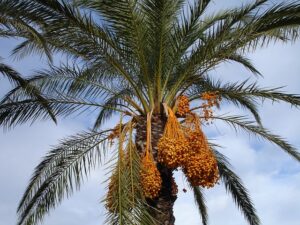 The red palm weevil is regarded as a serious problem for the cultivation of date palms leading to massive economic losses worldwide. Although curative techniques are not challenging, early detection is still difficult to be performed. Fiber optic technology allows overcoming the threat and offers reliable detection of RPW by a distributed acoustic sensor (DAS).
The red palm weevil is regarded as a serious problem for the cultivation of date palms leading to massive economic losses worldwide. Although curative techniques are not challenging, early detection is still difficult to be performed. Fiber optic technology allows overcoming the threat and offers reliable detection of RPW by a distributed acoustic sensor (DAS).
Modern DAS systems enable to detect feeding sound created by larvae as young as 12 days, in an infected tree. Compared to traditional methods, the DAS technique provides a cost-effective and non-invasive alternative that can perform 24-7, real-time monitoring of 1,000 palm trees, or even more. Moreover, distributed sensors allow controlling temperature, a crucial characteristic to monitor farm fires, one more important problem for the cultivation of palm trees around the world.
Nowadays there are various techniques to detect the weevils. For example, it is possible to use trained dogs to smell the odor, however, such sensing is not precise and has low efficiency. That is why distributed acoustic sensors are considered to be the most promising early detection techniques. Current sensing technologies use sound probes to install them right into the tree trunk but such acoustic sensors damage plants and create a nest for other insects.
The novel distributed acoustic sensor combined with a signal processing algorithm offer a reliable solution for the early detection of red palm weevils. The design of the DAS system is based on the use of the laser and photodetector installed within a single unit, while only the optical fiber is wound around the palm trees to create an optical network. The developed DAS technique has been already tested on two palm trees (one healthy and one infested with ~12 days old larvae.).
The thing is that the novel distributed acoustic sensors are “uniquely non-invasive, providing 24-7 monitoring, at relatively low cost, and offering wide coverage of the farming area, using only a single fiber optic cable.”
To be more precise, all the optical/electronic components applied to design acoustic sensors are put into a sensing unit, which is linked to an optical fiber that is extended throughout the palm-trees farm. Herewith, the fiber circles each tree trunk, from the ground up to a ~1 m height because the probability of RPW is extremely high there. Also, the fiber optic cable between trees can be either put on the ground buried in the soil providing real-time monitoring that promotes precise identification of locations of the infected and healthy trees.
The design of DAS systems includes the use of phase-sensitive optical time-domain reflectometry (Φ-OTDR) that has numerous potential applications in the oil and gas industries as well as for real-time structural health monitoring. The operating principle of distributed acoustic sensors is based on “launching a train of optical pulses generated by a narrow linewidth laser into a single-mode fiber.”
Optromix is a DAS system manufacturer that provides top of the line distributed acoustic sensing systems suitable for monitoring of commerce networks. If you have any questions or would like to buy a DAS system, please contact us at info@optromix.com

